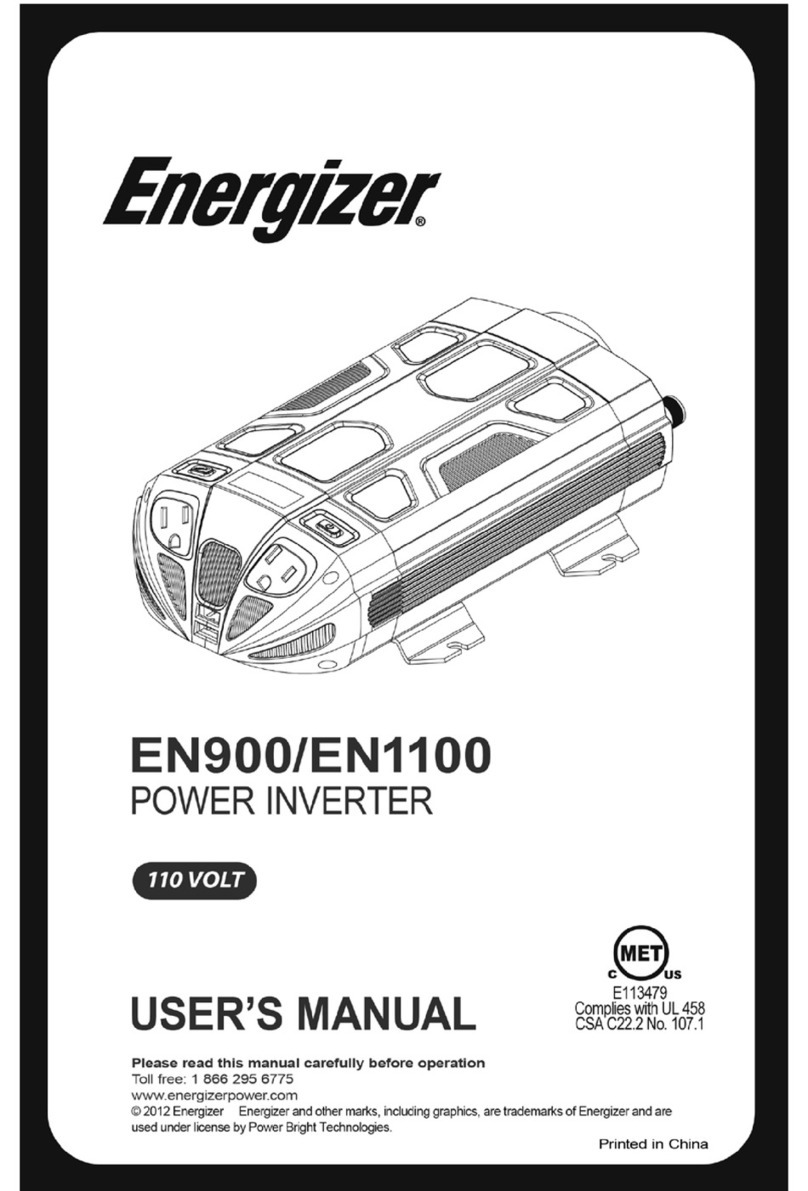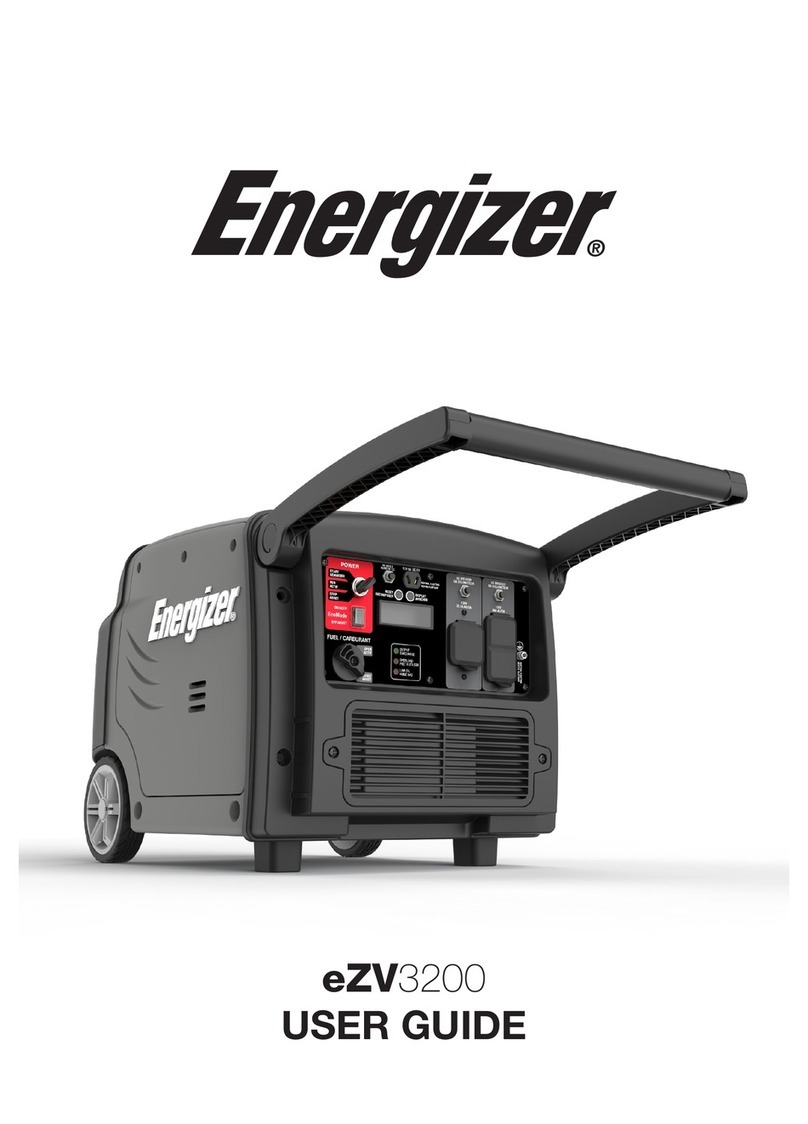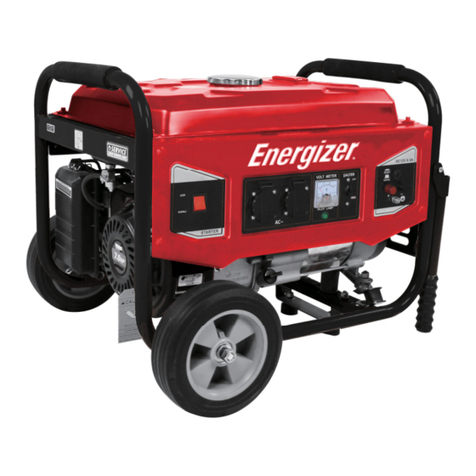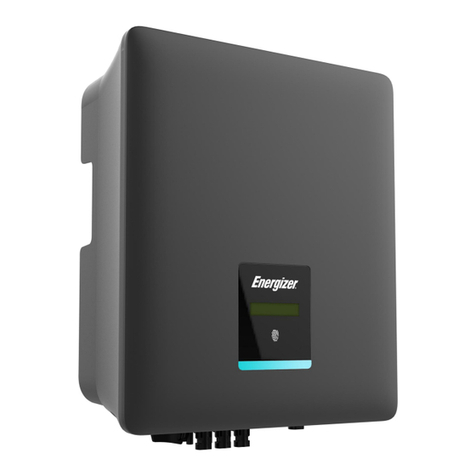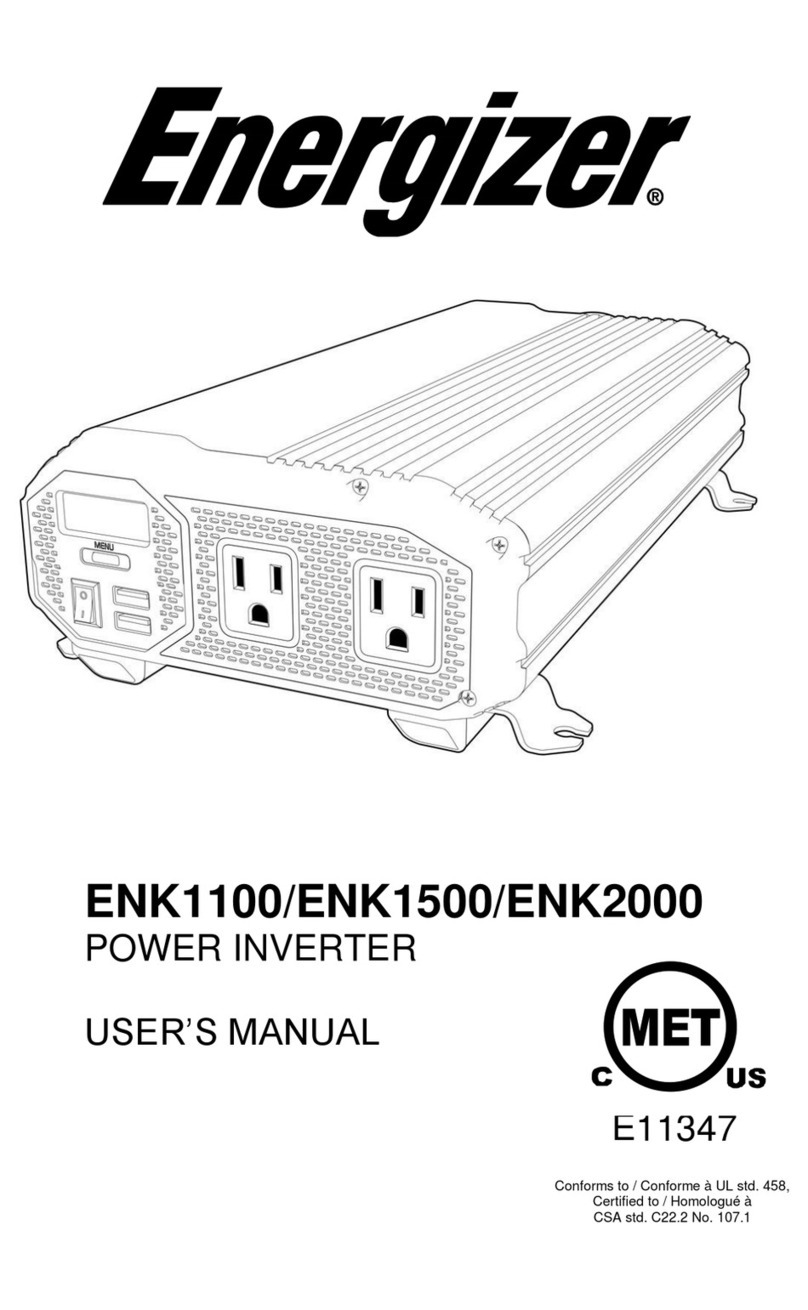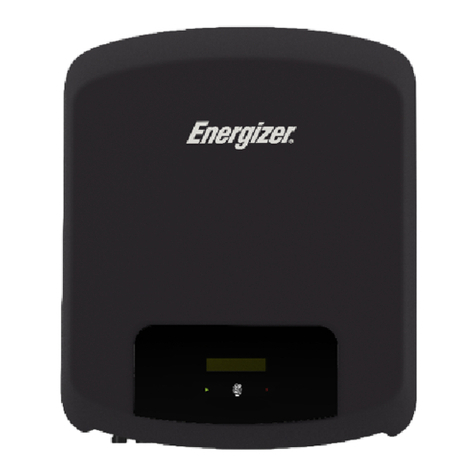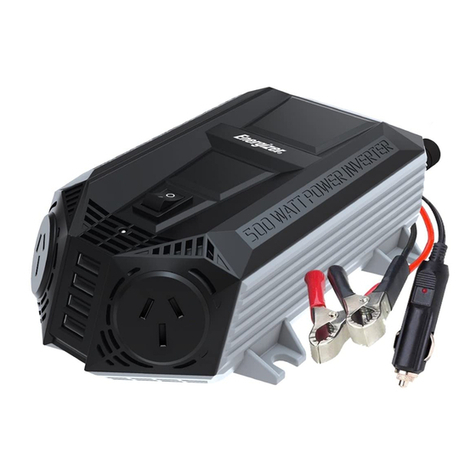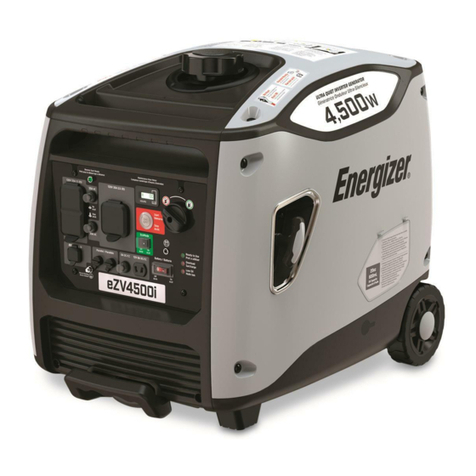
10
8 Star Energy Pty Ltd | Level 35, 477 Collins Street, Melbourne VIC 3000 | https://www.energizersolar.com
8 Star Energy ESS Ltd | The Black Church, St Mary’s Place, Dublin DO7 P4AX, Ireland
must be cardboard bedding under the photovoltaic
modules. For example, when installing photovoltaic
modules on the roof, the number of modules stacked
up on a pile should not exceed 20. For roofs with
poor load-bearing capacity, it is recommended that
the designer or installer evaluate the load-bearing
capacity of the roof and reduce the load-bearing unit
area of the roof by reducing the number of piles. At
the same time, avoid placing any installation tools or
other objects on the surface of the photovoltaic
module.
Energizer Solar PV modules adopt high and low
current bins, and the handlers need to place them
separately and mark them according to the markings
on the power list of the PV modules outer packaging
(for example, 270W-L means low current gear;
270W-H means high current gear position; the
current division method required by other customers
is similar). According to the system design
requirements, the same current gear position is
usually required in the same array during installation.
If the customer requires PV modules to be
distinguished by color, the outer packaging box shall
be marked accordingly, and the PV modules shall be
marked to prevent confusion when they are taken
out of the packaging box and stacked. According to
the system design requirements, the color of
photovoltaic modules in the same row or square
array should be the same.
6 Mechanical installation
6.1 Installation conditions
•Recommended ambient temperature: -20°C to
+50°C;
•Extreme working environment temperature of
photovoltaic modules: -40°C to +85°C.
•Photovoltaic modules mechanical load: Under
standard installation conditions, the maximum
test snow/wind load is 5400Pa/2400Pa, and the
design load (considering a safety factor of 1.5)
is 3600Pa/1600Pa.
For specific installation methods and mechanical
load values of photovoltaic modules, please refer to
Table 2 for detailed installation instructions for
photovoltaic modules.
Photovoltaic modules are strictly prohibited to be
installed and used in excessive environments such
as hail, snow, hurricane, sandstorm, dust, air
pollution, and soot. It is strictly forbidden to install or
use photovoltaic modules in an environment with
strong corrosive substances (such as salt, salt spray,
salt water, active chemical vapor, acid rain, strong
steam, or any other substances that will corrode
photovoltaic modules and affect the safety or
performance of photovoltaic modules).
If photovoltaic modules will be installed in special
environments such as high temperature and high
humidity environment, wet salt fog environment (C3
and above areas specified in ISO 9223), water and
breeding farms, etc., the purchaser or user must
inform 8 Star Energy in advance. The types of
photovoltaic modules, BOM, and quality assurance
issues shall be decided by the two parties through a
joint agreement and understanding.
If the above precautions are not followed, the
warranty will be invalid.
6.2 Installation angle selection
•The tilt angle of the modules is measured
between the surface of modules and a
horizontal grounding face, as shown in figure 1.
The modules generate maximum power output
when it faces the sun directly.
•In the northern hemisphere, modules should
typically face south, and in the southern
hemisphere, modules should typically face
north. Dust building up on the surface of the
modules can impair module performance, 8
Star Energy recommends installing the modules
with a tilt angle of at least 10 degrees, making it
easier for dust to be washed off by rain. At the
same time, it is conducive to the flow of
accumulated water on the surface of the
